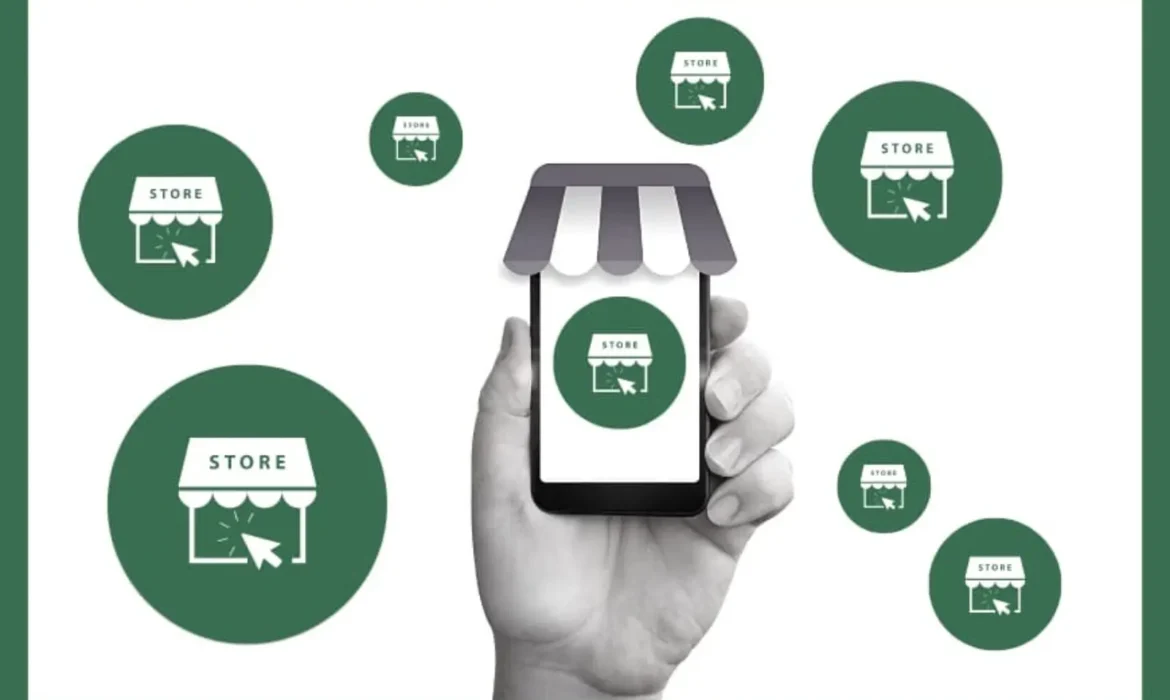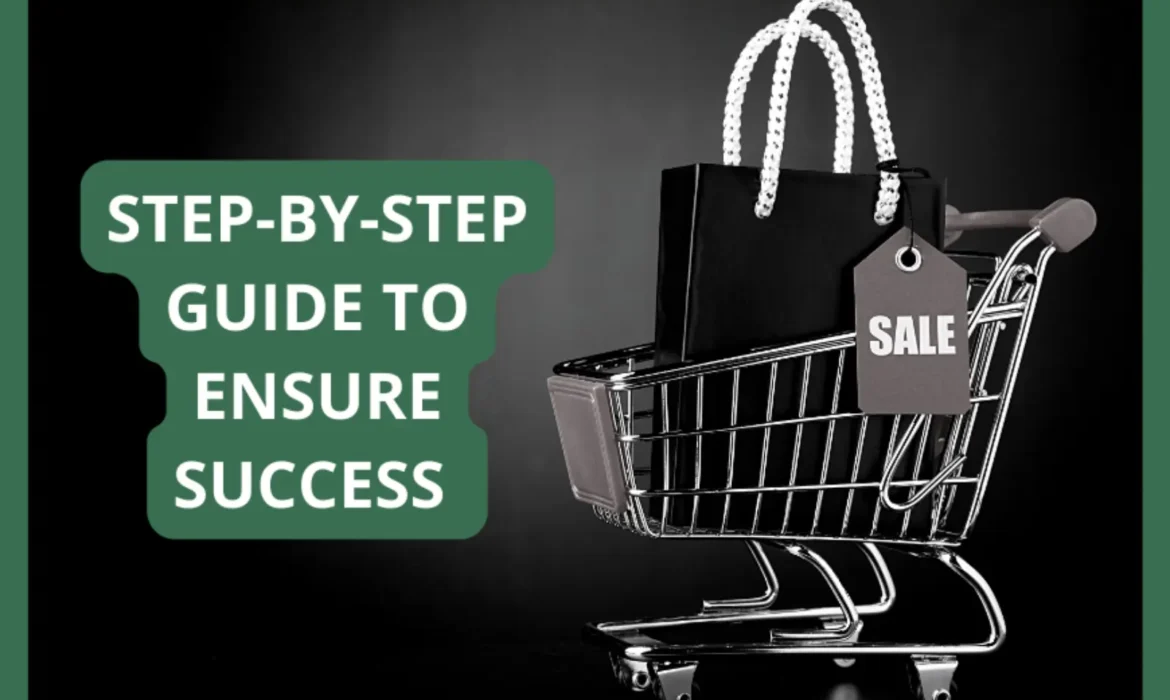Benefits of Having an Amazon Store

Amazon Stores are custom storefronts that brands can own on Amazon.com. This post entails an overview of Amazon Stores. We will also discuss examples and benefits of branded store pages, and share best practices to help you get the most out of your brand Store. We will also discuss Amazon Stores Analytics and how monitoring Store page performance can help brands plan and optimize content over time.
What are Amazon Stores?
Stores are virtual, multi-page storefronts within the Amazon marketplace that function as a key complement to the product detail page (PDP). Store pages are created through a free self-service tool that allows sellers to customize the look and organization of their products all in one place on Amazon.com. An effective Amazon Store is unique, engaging, and helps brands stand out from the competition.
A note about Brand Registry
It is important to note that stores are only available for vendors and sellers enrolled in Amazon’s Brand Registry. If you aren’t familiar with Brand Registry, Click here to read more about the program and reach out to us so we can help you get enrolled. In addition to Stores, Amazon’s Brand Registry unlocks multiple marketing and advertising opportunities like A+ Content, Sponsored Brand campaigns, Amazon Brand Analytics, and more.
Benefits of Amazon Stores
Stores allow brands to:
- Highlight product and collection features
- Generate new traffic sources for the brand and increase organic ranking
- Create a multi-device experience across desktop and mobile
- Highlight product and collection features
Amazon Store pages provide an opportunity to organize and showcase your brand in the way you would on your brand website, using rich content and navigation to curate product collections with intention. In brick-and-mortar stores, brands can broker more shelf space or pay for store displays. Within Amazon.com, a store page gives brands space to expand digital real estate and utilize rich branded content like banners and videos to guide the customer’s shopping experience.

Generate new traffic sources for the brand and increase organic ranking
Amazon has made it easy for discoverability on and off Amazon.com by building stores as standalone pages, each with a specific URL (amazon.com/brandname). On Amazon, customers can discover a brand store directly on the PDP (under the product title) and through Amazon Advertising Products. The brand store acts as a landing page for Sponsored Brand campaigns, and display ads can link to the main store page or a subpage. Brands can utilize existing marketing efforts across external platforms (like social media and email marketing) to drive traffic to Amazon through their dedicated store link, providing another retail option outside of an owned D2C site.
Create a multi-device experience across desktop and mobile
According to Amazon’s internal data, approximately 2/3 of store visits were on mobile devices. Regardless of the device, the store experience must be easy to navigate with clear and accurate shoppable modules. Amazon has made it easy for brands to develop and merchandise Stores to function seamlessly across desktop and mobile. In-Store Builder, Amazon automatically adjusts images for various screen sizes and includes a Custom Mobile Layout feature. Brands can check final layouts and navigation for desktop and mobile before publishing to determine if any modules need to restructuting for better viewing.
Remember to optimize!
Now that you know what it takes to create an excellent Amazon Store, there is one more important point to consider going forward: you cannot have a “set it and forget it” mindset if you want to be successful. We encourage brands to treat their Amazon presence just like brick and mortar, with a content calendar planned well in advance and seasonal updates surrounding holidays, tentpole events, and sales. For brands that want to compete in the marketplace, it’s imperative to monitor the performance of your Store pages and update your strategy accordingly.
Like its other marketing programs, Amazon Stores include analytics and reporting to help brands to make data-driven decisions about merchandising. Amazon Stores Analytics provides key metrics like sales, page views, and daily visits by store page and traffic source (internal and external). Access to this data unlocks key insights that brands can leverage to better optimize store effectiveness, curate new marketing opportunities, and adhere to broader brand guidelines.
If you have more questions about Amazon Stores that we haven’t answered here, or you’d like to see more examples of great Amazon Stores, learn the best practices for creating content, and get feedback on your current Store strategy, reach out to our consultants. We’re just an email away:
Benefits of Amazon Promotional Planning
Why Is Retail Readiness Important To My Business?

Navigating Amazon’s Deals and Promotions
Amazon offers an array of deals and promotions that brands can leverage to incentivize sales. Consumers are trained to expect deals, especially around tentpole events, but they are a tool that are deployed year-round.
With so many choices, figuring out which promotions to use and when can be confusing. Of course, Amazon is almost always a pay-to-play environment — meaning these deals and promotions have a cost associated.
This blog post will review the most common types of promotions on Amazon and explain the key benefits and best practices.
The Key Benefits of Amazon Promotions
- Incentivize consumers to buy products
- Promotions rotate through high-impact real estate, giving brands amplified visibility on the Homepage, Deals page, and Coupons page.
- Increased traffic and glance views (PDP views)
- Improved search rankings
- With increased sales, there is potential to generate increased reviews (New Products, in particular, can benefit here)
- Co-marketing: Amazon amplifies promotions through its digital marketing channels like daily emails, the mobile app, Twitter, and Facebook advertising. Tentpole events like Back to School, Holidays, and Prime Day are marketed through broader channels like TV & print.
Types of Amazon Promotions
Different promotion types work differently for various categories and consumers. We have broken down the types of promotions to help you navigate the space if your products qualify. (For your products to qualify they must first meet Amazon’s retail readiness requirements
Prime Day Deal Options
- Prime Exclusive Discount (Seller): Exclusive to Prime members for Prime shipping eligible FBA products. The product offer will display a discounted price with the regular price crossed out and will pull in a Prime Day Deals badge for your product across search, detail pages, cart, and checkout.
- Prime Day Promotion (Vendor): On Prime Day, these offers are featured on the Amazon Prime Day and Today’s Deals pages. “Prime Day Deal” badging also pulls through to improve discoverability. These deals will be a point-of-sale discount that merchandises promotions on product detail pages and cart widgets. Prime Day Promotions are applied at checkout and are exclusive to Prime members.

Deal of the Day (DOTD)
These promotions last 24 hours (or until stock runs out) and offer badges to improve findability. They are featured prominently on Amazon Today’s Deals page and can help increase your sales velocity. To qualify, products must have a minimum rating of 3 stars, need to be Prime shipping, and need the initial recommendation from Amazon. Previous sales history will influence the ranking on the “today’s deals” page, so we recommend using top-selling ASINs for this type of promotion.
Lightning Deals
A Lightning Deal is a version of DOTD but is only available for a short window of hours as a flash sale. The Lightning Deal applies only to one product but can include color and size variations.
Customers will find Lightning Deals on the “Today’s Deals” page, where a countdown timer and tracker create urgency to complete the sale. The deal ends when the time expires or when all available promotional discounts are claimed. Brands can sell the same amount of product they would normally sell in a week in just a couple of hours when using Lightning Deals.
Prime Early Access Deals
Brands can offer a 30-minute window to incentive Prime members to claim Lightning deals before they are offered to the public. This can be a great way to target Prime members specifically with your product and incentive them with an exclusive window to your deal.
7-Day Deals (Sellers)
Exactly how it sounds. 7-Day Deals have a “limited time deal” badge in search results, driving more visibility for sellers. This longer duration can be used to increase your overall traffic.
Best Deals & Hero Best Deals (Vendors)
These promotions can drive traffic to an entire catalog and can create awareness of one or several brands surrounding an event. Hero Best Deals are featured at the top of the event page and run between two to seven days.
Buy X, Get Y (BXGY)
These paid merchandising placements increase the visibility of your product by pairing it with another product or featuring it in the “best value” section of each PDP.
This promotion is a tactic to increase basket size and can be effective when pairing one product with another that is a natural add-on for the customer. The higher the sales ranking of your pairing, the more likely customers will see the promotion.
Coupons
Vendor Powered Coupons (VPCs) and Seller Central coupons come in the following variety: percentage off, dollars off, BOGO, free shipping, giveaway sweepstakes, and even social media promo codes. To qualify, the discount must be a minimum of 5% below the featured offer price. Coupons can also stack with other promotions.
When a consumer clicks on the coupon, it is added to their basket, and the discount is automatically applied at checkout. Brands only pay fees when the coupon is redeemed, and it’s important to note that coupons have an expiration date. Brands can also create a Coupon Landing Page (CLP) and drive off-site media to the page for incremental traffic and improved product ranking.
Coupons are especially helpful for gaining traction for new products and can be used on up to 50 ASINs for up to three months. They are listed within search results, on the product detail page, and the Amazon vouchers page with badges that make them easy to identify.
Best Practices for Your Planning Approach
When starting any deal or promotion, there are a few key best practices that brands should follow:
- Tentpole events are when you should run your best deals
- Inventory: make sure you have enough in stock to meet the deal quantity
- Sponsored ads boost the visibility of your deal
- Dynamic CTAs leverage discounted products in your display campaign
- Re-market to customers who considered, but have not yet purchased product or competitive products Keep testing!
Get Featured on Amazon’s Brand Registry

Amazon is a vast marketplace where one product listing can be the entry point to multiple sellers: either the official brand owner or the resellers of that product; this can bother brands who are used to primary control of their digital and physical shelf. No matter the size of the business, brands on Amazon can face stiff competition from resellers who disrupt the product detail page and customer shopping experience with lackluster (or worse, inaccurate!) information.
Luckily, Amazon’s Brand Registry program ensures that only the registered brand owner can control the information on the product detail page. In this post, we will explain everything you need to know about Brand Registry so you can claim your brand’s PDPs, unlock new marketing opportunities, and grow your business.
What Is Brand Registry?
Amazon’s Brand Registry program enables brand owners to gain control over their listings and content on the product detail page and prevents resellers from changing any information. Brand Registry also protects the end purchasing experience for the customer by keeping detail pages best-in-class and removing any possible infringement.
To be very clear, Brand Registry does NOT restrict sellers from listing and selling your brand product; it simply protects the listing information under the registered owner, so the customer sees the best information possible on the PDP when shopping for your product.

How To Enroll In Brand Registry?
After securing a trademark, brand owners can log in through their Amazon accounts and complete the registration process. They will need to provide brand names, relevant trademark information (logo files and registration details), product and packaging images, owned websites and social, and company information such as account details, and identifier type (UPC, EAN, GTIN), and countries of manufacture.
It is critical to know that Brand Registry is not only for national brands and traditional manufacturers. For private brands or white label owners, Brand Registry is essential to presenting the customer with best-in-class content and supporting the business with additional marketing opportunities.
Business Benefits: Benefits of Brand Registry
Control of the Brand Experience
For every seller on Amazon, listing content is the foundation of business. Inaccurate information can misrepresent a brand or product and lead to a terrible customer experience. Brand Registry grants brand owners control of the informational inputs on the PDP so they can maximize conversion potential and drive more sales.
Efficiency Through Reporting Tools
Through the portal, brand owners can access deeper search and reporting, including notifications of Brand Registry infractions like unauthorized sellers’ use of trademarked logos and content.
Proactive Brand Protection
Amazon uses information provided by the brand owners to prevent potential infringement and trademark issues and removes listings as follows:
- Product listings that return for your brand and incorrectly use your trademarked terms in their titles
- Images that carry your logo but are for products that don’t carry your brand name.
- Sellers ship products from countries where you do not manufacture or distribute your brand.
- Product listings being created with your brand name when you have already listed your complete product catalog on Amazon
Dedicated Amazon Support Team
Amazon provides a dedicated global customer service team to assist brand owners with phone calls and help tickets created for infringement issues. The team is quick and usually responds on the same day.
Advertising and Branding Opportunities
The following marketing and advertising tools are only available for brand-registered owners: A+ Content, Brand Stores, Sponsored Brand tools, and Amazon Brand Analytics, a reporting tool that provides key insights such as top search terms, and customer demographics, market basket analysis, and most-clicked products.
Other countries can be found here.https://brandservices.amazon.com/eligibility
More Ways for Brands to Protect Their Image and Data on Amazon
Amazon continues to face scrutiny over counterfeit products sold on its site. Many sellers list banned or unsafe products with fake certifications. Project Zero utilizes Amazon’s sophisticated technologies to monitor and automatically remove counterfeit products free of charge. Launched in 2019 in the US, Project Zero operates in 17 Amazon marketplaces globally. Once a brand is registered in one market, it is also registered worldwide. Read more about Project Zero from Amazon to learn how to further protect your brand’s representation on site.
Another program is Transparency, a tracking and serialization service used to prevent counterfeit goods from reaching customers. It is available in seven marketplaces globally. Amazon provides serialized codes to a manufacturer who must have the ability to apply the code to every unit manufactured; these codes can also apply to products sold to other retailers and authorized agents. Customers can interact with a brand by downloading the Transparency app and scanning the applied code to verify the authenticity of the product and receive unit-level information.
Transparency can be helpful across all product categories, but it’s worthwhile for brands to evaluate their annual cost of lost business due to counterfeiting first. There is a small fee (1-5 cents/unit), plus the additional operational cost for printing and applying the barcode. Additionally, because Transparency codes apply to all units manufactured, Amazon can receive valuable information about a brand’s retail distribution that may need to stay private. Transparency guidelines can be found here on Amazon.
In Conclusion, Here’s Why it Matters
Amazon is certainly taking steps to protect the integrity of its marketplace for brands and customers through programs like Brand Registry, Project Zero, and Transparency. As you continue to evaluate your brand’s Amazon presence, it is imperative to enroll in Brand Registry and maximize all the benefits the program offers. Unlocking the key benefits that Brand Registry offers will not only help drive topline sales and conversions but also improve the customer shopping experience and build long-term loyalty.
Are you exploring Brand Registry and how it can benefit your Amazon sales? Get in touch with us at info@katalysst.com
Check Your Amazon Retail Readiness

Amazon Retail Readiness: How to Prepare and Optimize Your Listings
As customers on Amazon, we’ve all come across detailed pages that are just terrible shopping experiences. Often, there’s a lack of information, misleading or confusing images, or out-of-stock items that you’re unable to add to your cart. It’s surprising that with the amount of seasoned, professional brands and sellers on Amazon, there’s still a huge opportunity to improve the detail page experience. This concept is known as retail readiness, and it’s necessary for any seller or brand on Amazon to launch product and advertising campaigns successfully.
Why Is Retail Readiness Important To My Business?
There are many components to the detail page that are often overlooked but are so essential to help the customer purchase the product. Retail readiness is a sales, advertising, and conversion strategy to ensure that your product’s detail page is presented in a best-in-class manner, to help the customer convert to a sale. Advertising campaigns may drive brand awareness and traffic, but the detail page bears the weight of being the final voice and descriptor for the product before purchase. If the customer finds all the information accurate and relevant for completing a purchase, the detail page is deemed retail-ready.
What Goes Into Retail Readiness?

Product Detail Page Copy: The text on a detail page has a massive job to accomplish as a salesperson, educator, and customer service as well as drive Amazon’s A9 algorithm, all at the same time. Creating strong, descriptive copy with high-indexing keywords helps increase overall search ranking and advertising efficiency and drives end conversion for the page.
- Product Titles:
Create consistent formulas across collections or product categories: brand name, collection name, product type, additional high-indexing keywords, color/scent/flavor, size, pack size
Amazon allows 200 characters, however, keeping titles at a minimum of 80 characters allows for mobile optimization
- Bullet Points
Use all five bullet points, with a consistent message of showcasing features and benefits.
Capitalize beginning keywords and features to capture the customer’s eye.
Keep bullet points between 150-200 characters maximum, even though the character limit is 500. If your bullets have too many characters, Amazon will contract the bullets to display only 2 bullets and include a “More” button. You’ll want your PDP to display all 5 bullets for the customer’s benefit.
- Product Description:
The description is one of the least viewed components of the PDP (and often hardest to find), however, it’s important to input data to drive search
Do not include overly romantic language to enhance bullet points; use similar clear and concise language with a target of 500-700 characters (Amazon allows 1900 characters)
Include an “About” statement for the brand within the PD. do not include a branded statement in the bullet points as it takes away messaging about the physical product itself.
- Product Images:
A great detail page will showcase a variety of images to display the product. Aside from following Amazon’s requirements (with main images being shot on a white background, with a minimum size of 1000 pixels for height and width), it’s important to showcase the actual product, and not use images for testimonials. Alternate images should include all exterior shots of the product (and packaging if applicable i.e. jewelry), as well as close-up shots of ingredients and lifestyle use. Utilize about 7-9 alternate images and remember that the product video is a great win for further showcasing the product.
- A+ Content:
Another great branding tool, formerly known as Enhanced Brand Content for Seller Central users. A+ Content is now available for both Vendor and Seller Central and allows a manufacturer or brand to display a full branded story with lifestyle images and text placements across multiple modules available. This feature is only available to Professional sellers or Vendor Central manufacturers who are enrolled in Brand Registry. Additionally, A+ content has a product comparison module available, which is a huge benefit to brands who want to display a collection of complimentary items.
- Customer Reviews and Star Ratings
Retail readiness includes customer feedback as well, which makes sense as Amazon is a customer-obsessed company! To be retail-ready, a PDP must have at least 15 customer reviews with a 3.5+ star rating on the detail page which can prove difficult for new launch items or sellers that have little brand recognition. Amazon recently made available Amazon Vine (where sellers send in products to Amazon for customers to review) to both Vendor and Seller Central. Additionally, Seller Central still has the Early Reviewer program available, where Amazon incentivizes shoppers to leave a review after a purchase usually in exchange for a small digital credit.
- Inventory
For a customer to buy a product, there must be inventory available to purchase. Inventory management across Vendor and Seller Central is equally important, though easier to control on the Seller side. To consistently win the buy box, and maintain search relevancy, a 95% in-stock rate is ideal for inventory management. A brand must create an efficient demand planning strategy, especially during peak times, to maintain strong inventory positions and reduce out-of-stocks.
- Buy Box
The buy box is where a customer will add a product to the shopping cart, essentially one of the last stages to complete the purchase cycle. To win the buy box, a few components must be considered: inventory status (please see above), Prime eligibility, and a competitively low price. For a brand on Vendor Central, winning the buy box appears as “Ships and Sold from Amazon.com”; for Seller Central, it appears as “Ships and Sold from “Your Company’s Name” and Fulfilled by Amazon (if you are using FBA).
Winning the buy box ensures you are receiving the credit for the sale, which increases the ASIN’s sales velocity, feeding back into Amazon’s algorithm. Advertising is also impacted from the buy box; Sponsored Product campaigns will pause if an ASIN is bought box ineligible, however, Sponsored Brands campaigns run regardless which leads to ineffective use of advertising dollars.
There’s a lot of work to create a retail-ready product on Amazon, but the work is worth the reward if your brand is successfully growing. Creating descriptive and informative detail pages not only improves the customer experience and drives sales but also reduces returns or unfavorable reviews on the ASIN’s detail page. Implementing retail readiness practices will prove valuable for any seller who is currently on or considering an Amazon business.
Ultimate Guide to Ensuring Success During the Amazon Great Indian Festival Sale

Here is a step-by-step guide to ensure success during the great Indian festival sale:
● Recommendation #1: Encourage repeat purchases, acquire new
customers, and drive a sales increase
A+ content enables you to tell a story, encourage repeat purchases and increase sales by up to 5-10% by
using rich content to showcase your brand and educate customers about your product features.
● Get your products closer to customers
When your products are in Fulfillment Centers (FCs) closer to customers, it means they get their products
faster and have a great festive shopping experience. Inbound Now
Can you self-ship and deliver products quickly to a nearby pin code?
● Get your products closer to customers
When your products are in Fulfillment Centers (FCs) closer to customers, it means they get their products
faster and have a great festive shopping experience. Inbound Now
Can you self-ship and deliver products quickly to a nearby pin code?
● Make your top ASINs Prime enabled
Customers love free and fast delivery and tend to order more when the products are under the Prime tag.Moving your products to FBA can help you get more sales during the festive period.
As a first-time FBA Seller, you can Try FBA For Free. Learn More
● Delight customers with Coupons
Seller Powered Coupons (SPC) is a self-service tool that will provide increased price benefits to customers.
SPCs are easy to redeem with no additional requirement for promo codes, loyalty cards, manual downloading, registration, or opting in. You can choose to target coupons to Prime customers and limit the redemption to once per customer during coupon configuration.
You can also run ads specific to coupons created for your ASINs Know More
● Time to launch a new product for your brand or to List More Products
Customer needs are constantly changing, and they can differ in the region you are in.
Catering to these changing needs of customers around you can help you boost your business get new customers faster. Click the link below for recommendations on products you can list.
● Get more visibility with sponsored products
Advertising through Sponsored Products is a great way to get your products in front of crores of customers who shop on Amazon. in.
Although bidding and CPC rates might be high and very competitive during the festive season, this is a great time to showcase your brand to acquiring new customers.
If you already use Sponsored Products, consider increasing your budget. If you are new to Sponsored Products, click here to get recommendations.
● Automate Pricing
If you are a seller managing thousands of SKUs/ASINs we understand that pricing thousands of ASINs in your catalog every day is next to impossible!
Hence, we created a tool to help you with just that – Automate Pricing.
Automate Pricing allows you to automatically adjust prices on ASINs in your catalog in response to events such as the Featured offer winning price or lowest price, without having to revisit the ASIN every
time you want to change the price.
By using this tool, you can spend more time focusing on other important aspects of your business!
Drop an email on info@bizmeth.in if you want to increase your profits during the Amazon Great Indian
Festival Sale





